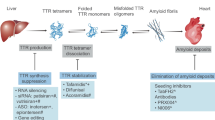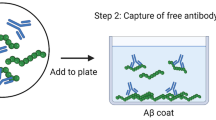Abstract
As we know, cataract disease is caused by the aggregation of crystallin proteins, such as α, β, and γ-crystallin, in the lens of the eye. Naturally, when mutations occur in γ-crystallin proteins, its binding affinity to the α-crystallin is increased, the protein with known chaperone role. Mutant γ-crystallin proteins also have a strong affinity to bind to each other and form large oligomers. The presence of these aggregates causes opacity of the lens of the eye and causes cataract disease. In this work, we aim to investigate whether peptides can prevent mutant γ-crystallin proteins from oligomerization/aggregation. Molecular docking and molecular dynamic simulations were used to determine how three putative amyloid-binding octapeptides (RVTWEGKF, RGTFEGRF, and RITFEIKF) bind to the mutant γ-crystallin protein. The results showed that RVTWEGKF had a more favorable binding energy for interaction with the mutant protein than RGTFEGRF and RITFEIKF. Also, in the presence of RVTWEGKF, mutant γ-crystallin is less likely to form protein dimers. Based on these findings, RGTFEGRF is proposed to be tested experimentally as a potential treatment against cataract disease.




Similar content being viewed by others
Availability of data and materials
No datasets were generated or analyzed during the current study. All data generated or analyzed during this study are included in this published article and its Supplementary Information files.
References
Pi L-H et al (2012) Prevalence of eye diseases and causes of visual impairment in school-aged children in Western China. J Epidemiol 22(1): 37–44
Wu X et al (2016) Prevalence and epidemiological characteristics of congenital cataract: a systematic review and meta-analysis. Sci Rep 6:28564
Fu L, Liang JJ-N (2003) Alteration of protein–protein interactions of congenital cataract crystallin mutants. Investig Ophthalmol Visual Sci 44(3):1155–1159
Hejtmancik JF (2008) Congenital cataracts and their molecular genetics. Sem Cell Dev Biol 19(2)
Scott MH et al (1994) Autosomal dominant congenital cataract: interocular phenotypic variability. Ophthalmology 101(5): 866–871
Ionides A et al (1999) Clinical and genetic heterogeneity in autosomal dominant cataract. Br J Ophthalmol 83(7): 802–808
Shiels A, Hejtmancik JF (2015) Molecular genetics of cataract. Prog Mol Biol Transl Sci 134:203–218
Groenen PJTA et al (1994) Structure and modifications of the junior chaperone α‐crystallin: From lens transparency to molecular pathology. Eur J Biochem 225(1):1–19
Yang Z et al (2013) A R54L mutation of CRYAA associated with autosomal dominant nuclear cataracts in a Chinese family. Curr Eye Res 38(12):1221–1228
Javadiyan S et al (2016) Recurrent mutation in the crystallin alpha A gene associated with inherited paediatric cataract. BMC Res Notes 9(1):83
Laurie KJ et al (2013) Identification of a novel oligomerization disrupting mutation in CRYΑA associated with congenital cataract in a South Australian family. Hum Mutat 34(3):435–438
Kong XD et al (2015) A novel 3-base pair deletion of the CRYAA gene identified in a large Chinese pedigree featuring autosomal dominant congenital perinuclear cataract. Genet Mol Res 14:426–432
Hansen L et al (2007) Genetic heterogeneity in microcornea-cataract: five novel mutations in CRYAA, CRYGD, and GJA8. Invest Ophthalmol Vis Sci 48(9):3937–3944
Khan AO, Aldahmesh MA, Meyer B (2007) Recessive congenital total cataract with microcornea and heterozygote carrier signs caused by a novel missense CRYAA mutation (R54C). Am J Ophthalmol 144(6):949–952
Santhiya ST et al (2006) Identification of a novel, putative cataract-causing allele in CRYAA (G98R) in an Indian family. Mol Vis 12(6):768–773
Andley UP, Goldman JW (2016) Autophagy and UPR in alpha-crystallin mutant knock-in mouse models of hereditary cataracts. Biochim Biophys Acta (BBA)-Gen Subj 1860(1):234–239
Datiles MB et al (2008) Clinical detection of precataractous lens protein changes using dynamic light scattering. Arch Ophthalmol 126(12):1687–1693
Shiels A, Hejtmancik JF (2007) Genetic origins of cataract. Arch Ophthalmol 125(2):165–173
Litt M et al (1997) Autosomal dominant cerulean cataract is associated with a chain termination mutation in the human β-crystallin gene CRYBB2. Hum Mol Genet 6(5):665–668
Mackay DS et al (2002) A nonsense mutation in CRYBB1 associated with autosomal dominant cataract linked to human chromosome 22q. Am J Hum Genet 71(5):1216–1221
Xi Y-B et al (2014) Cataract-linked mutation R188H promotes βB2-crystallin aggregation and fibrillization during acid denaturation. Biochem Biophys Res Commun 447(2):244–249
Zhou Y et al (2016) A novel CRYBB2 Stopgain mutation causing congenital autosomal dominant cataract in a Chinese family. J Ophthalmol 2016
Shiels A, Bennett TM, Hejtmancik JF (2010) Cat-Map: putting cataract on the map. Mol Vis 16:2007
Ikesugi K et al (2006) Role of the unfolded protein response (UPR) in cataract formation. Exp Eye Res 83(3):508–516
Eskici G, Gur M (2013) Computational design of new peptide inhibitors for amyloid beta (Aβ) aggregation in Alzheimer’s disease: application of a novel methodology. PLoS ONE 8(6):e66178
Mashiach E, Schneidman-Duhovny D, Andrusier N, Nussinov R, Wolfson HJ (2008) FireDock: a web server for fast interaction refinement in molecular docking. Nucleic Acids Res 36(suppl_2):W229-W232
Brubaker WD, Martin RW (2012) 1 H, 13 C, and 15 N assignments of wild-type human γS-crystallin and its cataract-related variant γS-G18V. Biomol NMR Assign 6(1):63–67
Maupetit J, Derreumaux P, Tuffery P (2009) PEP-FOLD: an online resource for de novo peptide structure prediction. Nucleic Acids Res 37(suppl_2):W498-W503
Schrodinger LLC (2010) The AxPyMOL Molecular Graphics Plugin for Microsoft PowerPoint
Van Der Spoel D et al (2005) GROMACS: fast, flexible, and free. J Comput Chem 26(16):1701–1718
Kaminski GA et al (2001) Evaluation and reparametrization of the OPLS-AA force field for proteins via comparison with accurate quantum chemical calculations on peptides. J Phys Chem B 105(28):6474–6487
Price DJ, Brooks III CL (2004) A modified TIP3P water potential for simulation with Ewald summation. J Chem Phys 121(20):10096–10103
Hess B et al (2008) GROMACS 4: algorithms for highly efficient, load-balanced, and scalable molecular simulation. J Chem Theory Comput 4(3):435–447
Makov G, Payne MC (1995) Periodic boundary conditions in ab initio calculations. Phys Rev B 51(7):4014
Author information
Authors and Affiliations
Contributions
RM and MFR contributed in resource and funding acquisition. KJ contributed in project administration. AN contributed in project administration, resources and funding acquisition, and validation. EB conceptualized the work and completing the draft; performed data curation, analysis, validation and visualization; and wrote the original draft. All authors reviewed the final manuscript.
Corresponding authors
Ethics declarations
Conflict of interest
The authors declare no competing interests.
Additional information
Publisher's Note
Springer Nature remains neutral with regard to jurisdictional claims in published maps and institutional affiliations.
Rights and permissions
About this article
Cite this article
Daryabari, SH., Aghamollaei, H., Jadidi, K. et al. Computational study of peptide interaction with mutant γ-crystallin with the aim of preventing dimerization. Struct Chem 34, 695–702 (2023). https://doi.org/10.1007/s11224-022-02015-w
Received:
Accepted:
Published:
Issue Date:
DOI: https://doi.org/10.1007/s11224-022-02015-w




